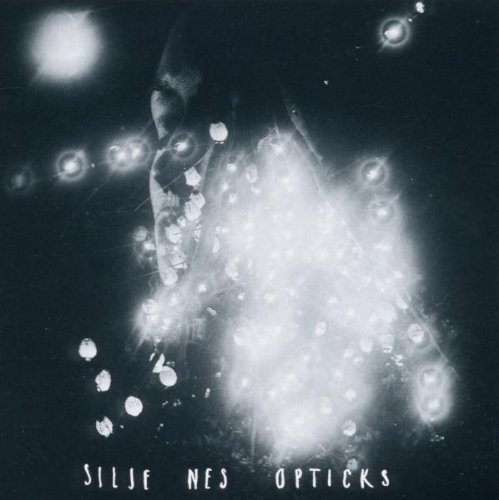
Silje Nes
Opticks
Release Date: Oct 12, 2010
Genre(s): Pop/Rock, Alternative/Indie Rock, Alternative Pop/Rock, Indie Pop, Experimental Rock
Record label: FatCat Records
Music Critic Score
How the Music Critic Score works
Buy Opticks from Amazon
Album Review: Opticks by Silje Nes
Very Good, Based on 6 Critics
Based on rating 8/10
Silje Nes recorded Opticks in the same home studio in which she made the collection of demos that became her debut album Ames Room, but the Norwegian’s second album opens a new world of possibilities. Opticks manages to be more cohesive and polished, drawing on Nes’ growing experience as a composer and producer without sacrificing the delicacy that made Ames Room so charming. And though these tracks are delicate, they’re far from passive -- if anything, Nes is more versatile and flexible on songs like the album-opener “The Grass Harp,” where the drums and artfully layered sounds pump the melody through the song like blood through an artery.
Based on rating 8.0/10
One of the great things about music is that it, unlike any other art form, doesn't always require your full attention. You can listen to it as you ride the train to work in the morning, cook dinner, or even just sit and stare out the window all afternoon. You can listen and enjoy it without even recognizing that you're listening to it. That's why they put music to films, and why that old cliché about the soundtracks of our lives still has some truth to it.With this is mind, we have Opticks, the delightful second album by Norway's Silje Nes.
Based on rating 4/5
Sure, once you hear that Silje Nes hails from the tiny coastal town of Liekanger, Norway, her music seems to echo out of some vast snowy terrain, a lonely expression of arctic life amidst all those fjords and floes. With her hushed vocals and spindly strings, she sounds like some miniature snow sprite or white gypsy fox dancing on the tundra, bright northern lights sparkling like jewels overhead. But that’s just one, rather mystical way of listening, and it misses a lot of what matters in this music.
Based on rating 7.3/10
Silje Nes makes music that sounds incredibly private and intimate. She sings words, but they barely register-- her soft, wispy voice indicates a human presence and conveys a shy personality more than it expresses any specific ideas. Her arrangements are hypnotic and often quite beautiful, built upon layers of fragile guitar lines, warm bass notes, rhythm, and ambient tones.
Based on rating 5/10
“Silje gjør det selv,” that is, “Silje does it herself,” declared Oslo newspaper Aftenposten on the subject of singer/multi-instrumentalist Silje Nes, in her native Norwegian. Good for her. The work ethic that playing everything you record requires must be impressive indeed—possibly only achievable by a true obsessive. (See: Sly Stone, Beirut.) The problem with obsessives, though, is their obsessiveness.
Opinion: Very Good
Twilight tinklings from experimental Norwegian chanteuse. Wyndham Wallace 2010 It’s hard not to draw comparisons between Silje Nes and fellow Norwegian Hanne Hukkelberg, another classically trained musician who flirted with a variety of different musical styles before finding her own path. Both are notable for their hushed, sweet vocals, and both released debuts littered with experimental sounds: Hukkelberg’s 2004 album, Little Things, saw her recording the sounds of pots, pans and bicycles, while Nes’ Ames Room (2009) used technology to manipulate the instrumentation into intriguing shapes.
'Opticks'
is available now

